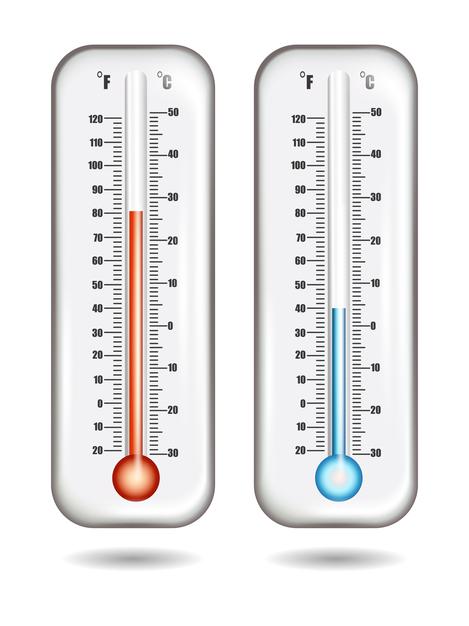Philosophical reflections It’s cold, or I’m cold. It’s hot, or I feel hot?
At home, and in the buildings where we work, we usually turn on the heating during part of the year. Why? Because it is cold. But where is it cold? ➔ Outside, inside?
Also, during the warm season, in many countries, the cooling system is operated in summertime. Why? Because it is hot. But where is it hot? ➔ Outside, inside?
The terms “cold” and “hot” are normally assigned to a physical parameter, which is temperature.
Both, hot and cold, are thermal energy concepts. We use the terms “cold” and “hot” as relative values. We quantify these concepts with a parameter called temperature, and we measure it with a thermometer.
Let us turn now to the word “it is”. The term “it is” sounds objective. At what temperature do we say that it is “hot” or “cold”? There is no answer. If we talk about 5°C we may agree that it is “cold”, and if we talk about 44°C we may agree that it is “hot”.
However, if the temperature is 21ºC, it seems very likely that different people will express opposite opinions. But it is possible that the conjugation of the verb they use is no longer the same, that they replace “it is, which conveys an objective, measurable, quantifiable, indisputable assessment, with the verb “I am”, I am cold, I am hot. And if we look at it, the subject of the sentence will also change. In the locution “it’s cold” or “it’s hot”, the subject is elliptical, impersonal, universal. It’s hot, full stop. It’s hot for everyone, and that’s all there is to it.
When we say “I am cold”or “I am hot”, we express a personal feeling, a subjective appreciation. And we usually speak in the first person. It is not so common to say “you are cold”, because everyone knows how it feels. I don’t know whether you are hot or cold. It is precisely this sentence that makes sense when it becomes an interrogative: Are you cold?, or even better, are you feeling cold?
These philosophical reflections on thermal energy, hot, cold, thermometers and temperature are enough for us to explore the subject a little further.

In honour and remembrance of Mr. Fanger[1]
The expressions “I am hot” or “I am cold” are a simplified way of describing our feeling of comfort with respect to our environment. This sensation includes a series of parameters that go far beyond temperature.
Although this is not the subject of this article, let us briefly recall them:
- Dry air temperature in our environment, measured even at different heights, is the parameter that, by default, can be interpreted as the one we refer to when we use the term “temperature” alone.
- Radiant temperature, which is the temperature of the surfaces that radiate towards our body, and which is modulated according to the distance that separates us from them.
- An elaboration from the previous ones would lead us to the effective temperature and the operative temperature, more representative of what we are looking for, but we leave it there.
- Relative humidity, which is the % of water vapour in the air around us, with respect to the maximum amount of water that at that temperature would remain in the gas phase without condensing.
- Air velocity when it comes into contact with our body.
- Metabolic rate, which is related to our metabolic activity at that moment (at rest, walking, running, etc.).
- Clothing index, which tells us about the degree of protection against the outside environment with which we are equipped at any given moment.
- Body Mass Index (BMI), which refers to our physical constitution, obesity, etc.
These issues have been studied for decades, with the contributions made by Fanger. His name was given to a method of relating all these parameters and trying to objectify these subjective sensations.
After explaining this range of variables that affect the sensation of comfort, we retrace our steps. Let’s imagine a person with all his intrinsic attributes close to the average: age, weight, race, activity, clothing, etc. placed in an environment in which the variables that do not concern him, such as speed of air and others, also remain approximately constant.
This simplification may seem too excessive, but if we look at the reality, we will accept it without too much error. In fact, in a workspace, it is common to see that a large majority of people dress in the same way that the distribution of their age and weight corresponds to a fairly tight Gaussian bell, etc., so that the working hypothesis can be considered quite acceptable. It would be a different matter if we were talking about a dwelling, where the dispersion of some of these factors is, by definition, much greater…
But let’s go back to the workplace.
Always remembering what Fanger said, and which we all have the opportunity to see every day, there is no set of values of these parameters that we have mentioned that satisfies all users.
Therefore, the first premise that must be assumed before starting an air conditioning project is that we will not be able to provide a solution that will satisfy all users. Following the criteria that have been developed on the subject, an acceptable air-conditioning system will have a PPD[2] of 15%, i.e., 15% of the users will not be comfortable with the values of the parameters that are given in the air conditioning system. A 10% PPD is indicative of a high-quality air-conditioning system, and obviously entails higher investment costs.
Once again, we reset to agree that, without forgetting them, we leave aside all the previous variables except one, which we will keep. This variable will be the BDT (Bulb Dry Temperature) of the rooms. We will usually call it as Indoor Temperature.
At this point, we will also establish the hypothesis that in order to reach and maintain this BDT, it is necessary to provide positive thermal energy (heat) or negative thermal energy (cold), depending on the outside temperature and other parameters that also come into play.
References
1. Povl Ole Fanger (1934-2006) was an expert in the field of thermal comfort and perception of indoor environments. He was a senior professor at the International Centre for Indoor Environment and Energy at the Technical University of Denmark
2. The Predicted Percentage of Dissatisfied (PPD) index provides an estimate of how many occupants in a space would feel dissatisfied by the thermal conditions. All occupied areas in a space should be kept below 20% PPD in order to ensure thermal comfort according to the known standards (ASHRAE 55 and ISO 7730)
Written by Antoni Quintana, from COMSA
